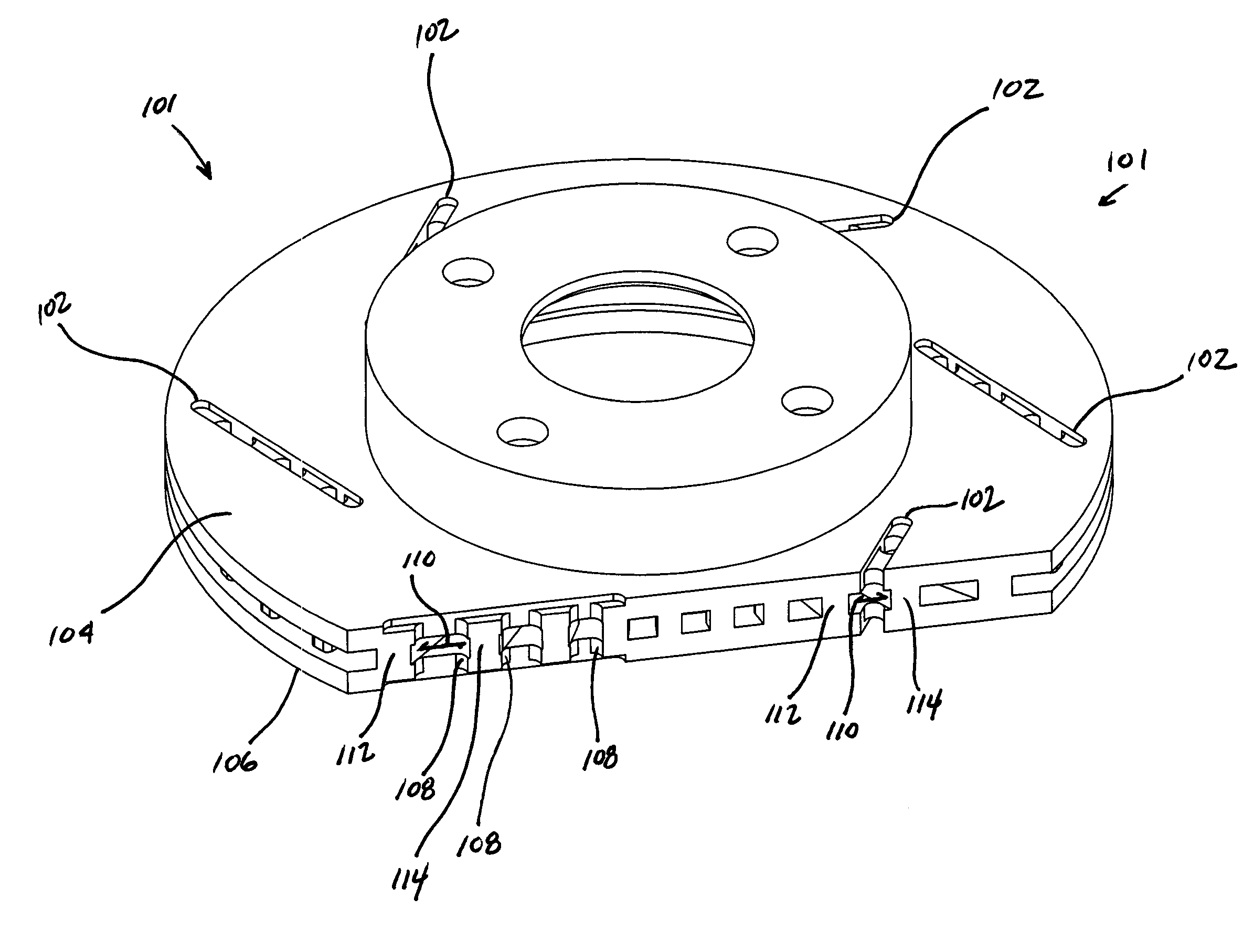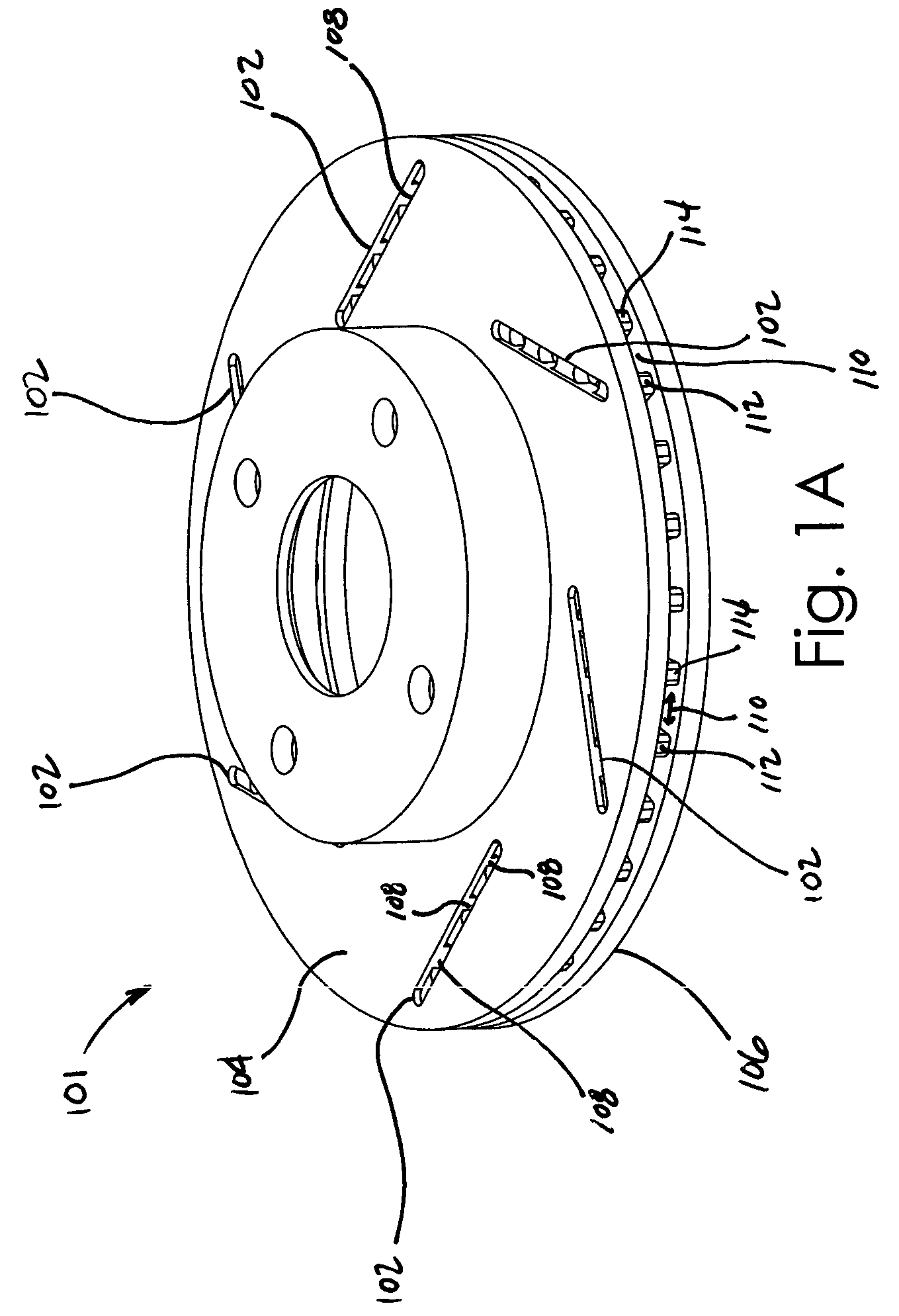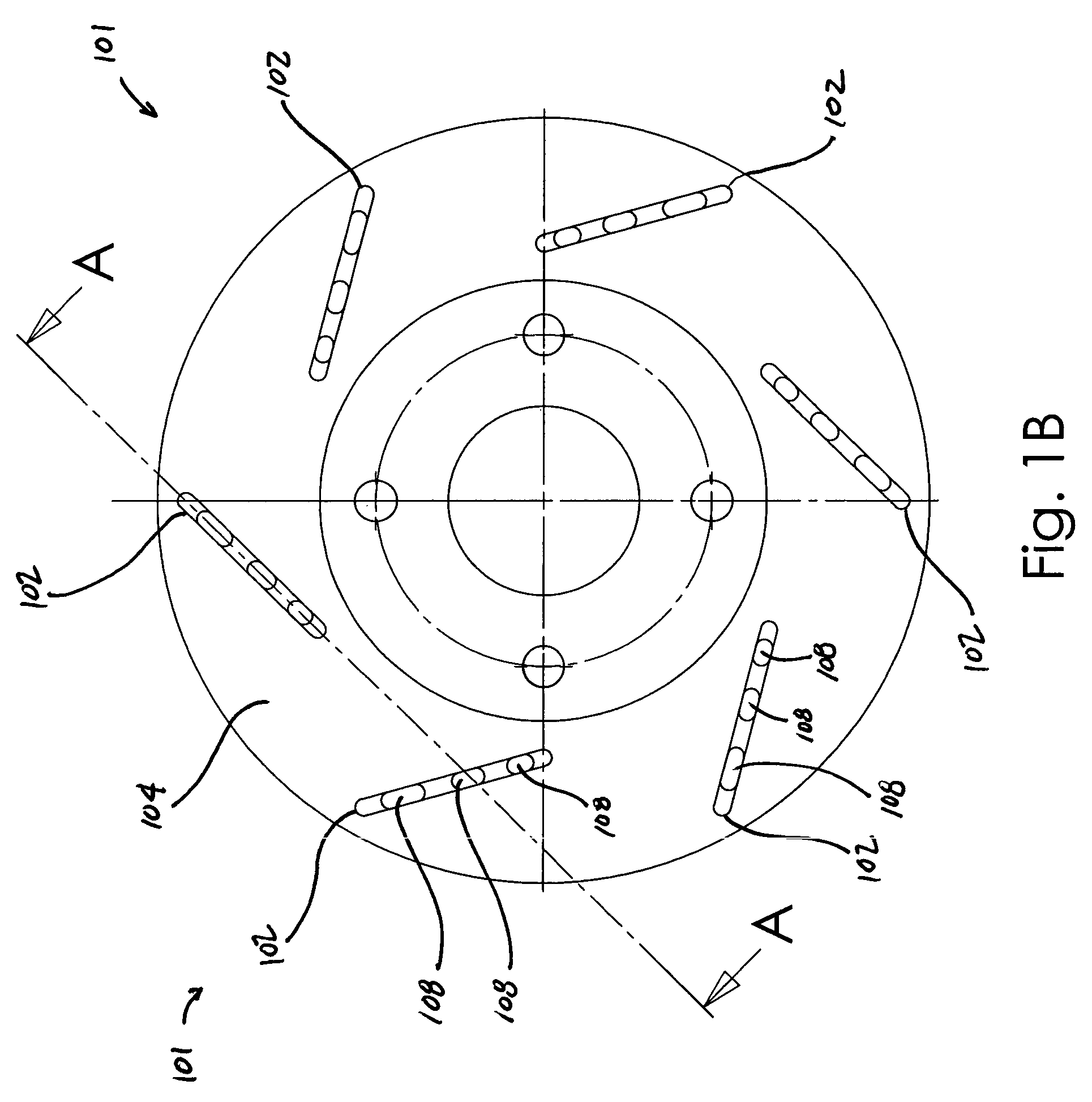Vented slot brake rotor
a brake rotor and venting technology, which is applied in the direction of brake elements, brake discs, brake types, etc., can solve the problems of reducing the heat dissipation surface area of the respective external braking surface, reducing the braking performance, and reducing the braking surface area, so as to increase the brake performance and the cooling efficiency of the brake rotor
- Summary
- Abstract
- Description
- Claims
- Application Information
AI Technical Summary
Benefits of technology
Problems solved by technology
Method used
Image
Examples
Embodiment Construction
[0024]As shown in FIGS. 1A–2, a disc brake rotor 101, for example, may include a plurality of slots 102 formed into either or both external braking surfaces 104 and 106 of the disc brake rotor 101. The depth of the slots are formed at a predetermined depth. Such depths may be, for example, between 0.01″–0.50″ or greater, depending upon size of the brake rotor and braking application (passenger car, racing, bus, aircraft), or any other depth familiar to those of ordinary skill in the art for such slots. The slots may be positioned in any fashion: angled, as shown in FIG. 1, curved, zig-zag, straight, and any combination thereof.
[0025]The width of the slot may be between 0.01″ and several inches or more, depending on the size of the brake rotor and braking application. For most automotive applications (e.g., passenger cars), for example, the width may be between 0.0625″ and 0.25″. The length of the slot may be any length, but preferably such that the position of the slot on the extern...
PUM
 Login to View More
Login to View More Abstract
Description
Claims
Application Information
 Login to View More
Login to View More - R&D
- Intellectual Property
- Life Sciences
- Materials
- Tech Scout
- Unparalleled Data Quality
- Higher Quality Content
- 60% Fewer Hallucinations
Browse by: Latest US Patents, China's latest patents, Technical Efficacy Thesaurus, Application Domain, Technology Topic, Popular Technical Reports.
© 2025 PatSnap. All rights reserved.Legal|Privacy policy|Modern Slavery Act Transparency Statement|Sitemap|About US| Contact US: help@patsnap.com



